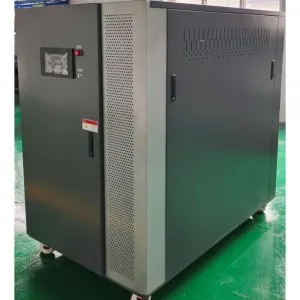Set . 04, 2024 21:07 Back to list
custom iron casting
Custom Iron Casting A Craft of Precision and Artistry
Custom iron casting is a time-honored production technique that merges artistry with engineering, creating uniquely designed iron products tailored to specific needs. As industries evolve, the demand for customized iron components has surged, necessitating innovative approaches to casting techniques. This article explores the intricate world of custom iron casting, highlighting its advantages, applications, and the processes involved.
At its core, iron casting is the process of pouring molten iron into molds to create specific shapes and components. Custom iron casting focuses on producing bespoke castings that meet unique specifications, addressing particular functional requirements while ensuring quality and durability. This customization allows manufacturers to produce parts that fit precisely into their intended applications, reducing the need for modifications or additional machining.
One of the primary advantages of custom iron casting is its versatility. Iron can be alloyed with various elements to enhance properties such as strength, ductility, and corrosion resistance. This adaptability allows designers to create components that meet demanding performance specifications. For example, automotive industries utilize custom iron castings to produce engine blocks, transmission housings, and brake components, where strength and heat resistance are paramount.
The process of custom iron casting typically begins with the creation of a detailed design. Modern technology, such as Computer-Aided Design (CAD), enables engineers and designers to visualize and alter their concepts before production. Once the design is finalized, a mold is created, which can be made from materials like sand or metal, depending on the casting method chosen. The mold must be precise, as it will dictate the final shape and dimensions of the casting.
custom iron casting

There are several casting methods employed in custom iron casting, such as sand casting, investment casting, and lost foam casting. Sand casting, one of the oldest methods, involves creating a mold from a mixture of sand and bonding agents. This method is favored for its cost-effectiveness and ability to produce large castings. Investment casting, on the other hand, allows for intricate designs and high precision, making it ideal for complex components. Lost foam casting is a relatively modern method that uses a foam pattern, providing a smooth finish and reducing machining requirements.
Once the mold is prepared, molten iron is poured into it, where it takes the shape of the mold cavity. After cooling, the mold is removed, revealing the casting. The quality of the casting is paramount, so techniques such as x-ray inspection and ultrasonic testing are employed to identify any defects.
The applications of custom iron casting are extensive. In addition to automotive components, custom castings are used in construction for structural components, in the machinery industry for tooling and fixtures, and in art for sculptures and decorative elements. The unique ability to produce tailored solutions makes custom iron casting an invaluable resource across multiple sectors.
In conclusion, custom iron casting stands as a blend of tradition and innovation, providing a solution that meets the specific needs of various industries. As technology continues to advance, the potential for creativity and precision in custom iron casting is boundless, making it a vital part of modern manufacturing. By emphasizing quality, design, and adaptability, custom iron casting not only fulfills practical requirements but also contributes to advancements in functionality and aesthetics across numerous applications.
-
Durable Centrifugally Cast Iron Water Main Pipe
NewsAug.11,2025
-
Centrifugally Cast Iron Water Main Pipes for Reliability
NewsAug.10,2025
-
High-Quality Centrifugally Cast Iron Water Main Pipes
NewsAug.09,2025
-
Durable Cast Iron Water Main Pipe & Drainage Solutions
NewsAug.08,2025
-
Buy Cast Iron Pipe: Premium Ductile Iron & Drain Solutions
NewsAug.07,2025
-
Durable Cast Iron Water Main Pipe | Buy Ductile Pipe
NewsAug.06,2025


